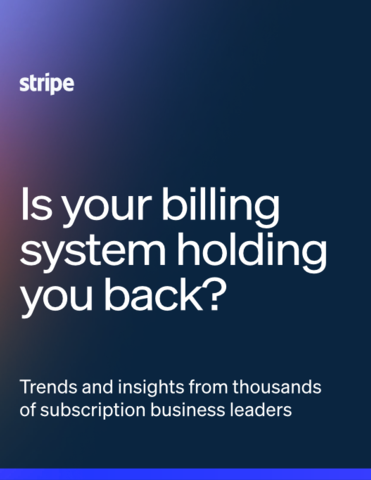Embedded payments offer the ultimate competitive advantage – here’s why
Payments27 Jun 2024
Sponsored by NMI
For the first time in history, more than nine out of 10 consumers have made a digital payment over the past year.
This finding highlights an irreversible shift in consumer behavior. Instead of carrying cash and counting out change, buyers are abandoning traditional payments in favor of fast, convenient digital options.
This may include hailing a cab, ordering delivery through an app, paying at a self-checkout with a smartwatch, buying a plane ticket online, a painting from an online artist, or any number of other purchases. No matter what this trend looks like for you, one thing is certain – nearly everyone you know will make a digital purchase this year.
As younger consumers gain buying power, businesses will need to find new ways to meet evolving payment expectations. This is where embedded payment technology comes into play: it makes it easier to compete by giving companies the functionality they need to stand out from the crowd, capture more sales, increase customer loyalty and bolster brand value.
Every business takes payments, but not every business takes payments well. Embedded payments make it possible to meet shifting customer demands and offer outstanding payment experiences while earning additional business revenue.
How embedded payments are changing the financial landscape (and why you should be paying attention)
Embedded payments, and embedded finance, refer to payment solutions integrated into digital platforms. This can include buying dinner through an app, paying an invoice via SMS, sending money to a friend via an app or paying a medical bill through a hospital’s business management software.
If you’ve ever paid for something digitally (including through a point-of-sale terminal at the supermarket), you’ve used an embedded payment solution.
The shift towards digital, embedded payments solutions is driving industry innovation by:
• Offering consumers more choice and flexibility
• Streamlining the integration of payment technology into software applications
• Facilitating real-time transactions
• Collecting deep, omnichannel data (including consumer insights and business intelligence)
• Combating fraud with built-in, AI-powered safeguards
Solutions such as these make payments more accessible, convenient and seamless. They make it easier for customers to pay, for businesses to get paid and for software platforms and payment providers to open new revenue streams.
Strategic benefits of embedded payments
Embedded payments offer everyone in the payments chain – from small businesses to software platforms to payment providers – a strategic leg-up. They make it easier to meet evolving customer expectations while positioning businesses at the forefront of innovation.
Competitive advantage: Expanding payment options with embedded solutions helps brands stand out in an increasingly saturated market. As younger, tech-savvy generations gain buying power, digital payments will become table stakes. After all, why would consumers carry cash if they could simply tap their watch or phone to pay?
Offering digital-first payment options enables businesses to capture a greater share of trade while ensuring long-term growth and profitability. The market will only become more digitized; now is the best time for businesses to re-evaluate how they take payments to set themselves up for future success.
Higher sales: Providing more ways to pay makes it easier for customers to buy what they want, no matter where or how they choose to shop. Do your customers want to use digital wallets? Pay over time with buy now, pay later (BNPL)? Eliminate the hassle of recurring payments by opting in to subscription services?
Embedded payments give businesses the tools to capture sales in more places while reducing the risk of abandonment. Flexibility, choice and convenience are top of mind for customers, and they’ll look elsewhere if businesses are unable to provide the payment journey they expect.
Customer loyalty: There’s an old saying that all you need to be successful are 1,000 “true fans.” These are the people who live and breathe your brand and will always turn to you when they’re ready to make a purchase. But what happens when those fans aren’t as loyal as they used to be?
62 per cent of Gen Zers will look into other options even when they have a favorite brand, and more than half are willing to switch brands if they find an alternative offering cheaper or higher quality products, according to one survey. In essence, Gen Zers don’t tie themselves down, making it more important for businesses that take payments to provide exceptional experiences.
Brand value: If you decided to sell your company tomorrow, how much would it be worth? Embedding payments solutions into its core offerings is a powerful way to elevate a brand’s value. There are three key factors that make this possible:
• Revenue sharing: With the right embedded payments provider, revenue can be shared and profits generated on every transaction
• Value-added services: Sell valuable add-ons to customers, such as built-in fraud prevention, automatic card updaters (so you never have to worry about expired cards) and subscription services
• Company valuation: Broadening its payment options will make a business more competitive, lucrative and attractive to potential investors – especially compared to less innovative competitors
Embedded payments are the future – are you ready?
By 2030, Millennials and Gen Z are expected to represent a combined 48 per cent of all retail spend. As the first generations of digital natives, these consumers are pushing the industry forward. They are less likely to carry cash and physical cards than their older counterparts and expect cohesive embedded experiences everywhere they shop – online, in-app and in person.
As young consumers change the financial landscape, payments will only become more seamless, digitized and “invisible”. This means businesses have two options: innovate or be left behind.
The biggest challenges most businesses face when making the leap into embedded payments are time, support and resources. Unfortunately, big-name players in the space are often expensive and difficult to integrate with. They typically offer limited online-only support rather than the flexible online, chat, phone and email options that customers need in a pinch. They’re also nearly impossible to unplug from when businesses are ready to move on.
When beginning your search for an embedded payments provider, look for someone who enables partners to easily embed payments into their solutions. They should provide pre-built no-code, low-code SDKs and APIs in a developer-friendly environment, so teams don’t have to waste time or resources building out the necessary infrastructure in-house. Additionally, to avoid payments becoming a cost center, be sure to find a partner who will share the revenue.
Embedded payments facilitate seamless transactions across platforms, devices and geographies. They offer the ultimate competitive advantage for those ready and willing to take the leap.
by Vijay Sondhi, CEO, NMI
About NMI
NMI is a global leader in embedded payments, powering more than $200 billion in payment volumes every year. From our industry-leading payment gateway technology to our seamless merchant acquiring, underwriting, onboarding and management platform, we enable our partners across the entire payments ecosystem.
We help our partners deliver frictionless payment solutions to their customers, offering modularity, flexibility and choice wherever and however consumers want to pay – online, in-store, in-app, mobile and unattended. And we’re constantly innovating, empowering ISOs, software vendors and payment professionals as they embrace the future of fintech. Learn more about NMI solutions and the future of embedded payments at www.nmi.com.

Business Reporter Team
Related Articles
Most Viewed
Winston House, 3rd Floor, Units 306-309, 2-4 Dollis Park, London, N3 1HF
23-29 Hendon Lane, London, N3 1RT
020 8349 4363
© 2024, Lyonsdown Limited. Business Reporter® is a registered trademark of Lyonsdown Ltd. VAT registration number: 830519543




